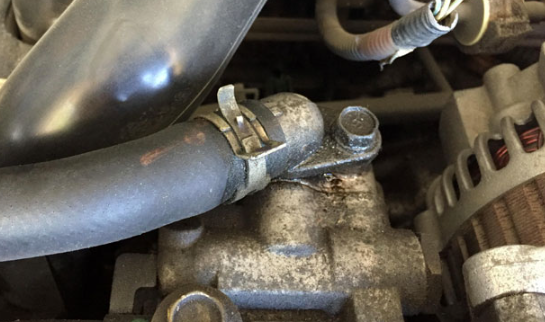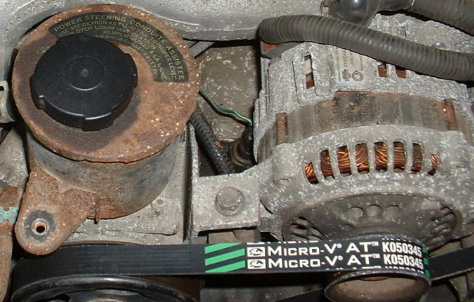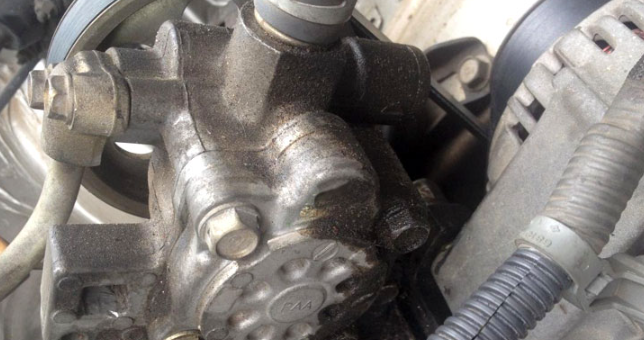When air is undesirably present in a vehicle’s power steering, its performance and capability of it gradually deteriorate and can cause a great deal of difficulty for drivers. It is imperative to identify symptoms associated with this issue so that steps can be taken to rectify it before any significant damage occurs. Today’s article will discuss some common symptoms that can help detect when air has been introduced into the power steering system and may be causing problems.
What Signs Detect Air In Your Power Steering?

When it comes to steering operation, one should be mindful of any discomfort or difficulty they experience. Unusual noises such as whining, grunting, moaning or growling, and difficulty controlling the steering wheel while driving can all signal a potential power steering failure. It is best to address these issues immediately in order to avoid further complications and ensure the continued safe operation of the vehicle.
Air In Power Steering Symptoms (4 Signs)

It is essential to be aware of signs and symptoms that could indicate when air has gotten into a vehicle’s power steering, as this can cause various issues. Along with the most common signs associated with air in the power steering, there are other lesser-known indicators that should be taken seriously. It is beneficial to gain an understanding of these warning signs in order to identify potential problems early on and prevent more severe damage from occurring.
1. Unusual Noises, Stiff Or Hard Steering Performs & Bubbles In The Reservoir Fluid
Power steering systems are vulnerable to air leakage, and if there is a buildup of air within the system, it can cause issues such as stiff or rigid turning wheels and unusual whining sounds when turning. Additionally, bubbles in the reservoir fluid may appear, as well as foaming or a decrease in fluid levels. If any of these signs become present, it is essential that they be addressed quickly to avoid further damage to the system.
2. Loss Of Power & Slow Respond
When an abrupt shift to manual steering is noticed, checking the power steering for trapped air is essential. Without proper attention, a loss of power and a growling sound may occur when operating at low speeds. Additionally, the power steering needs replacing if there is a slow response when turning corners.
3. Loss Of Steering Fluid Or Steering Fluid Leak
The power steering system’s effective functioning relies on a steady and high level of steering fluid. A visible leak or a low fluid level should be inspected to determine if excessive air is getting into the power steering, leading to failing and losing fluid. It is highly recommended to consult the user manual and follow its instructions to check the fluid level.
4. Pulsation Or Vibration On The Steering Wheel
When a vehicle is idling, one may encounter a vibrating or pulsating sensation coming from the steering wheel. This could be indicative of an issue with its power steering system that needs to be addressed. It is most noticeable when making turning motions and should not be ignored as it can signify an imminent failure in the fusible link.
What Should You Do After Detecting Air In Your Power Steering?
It is essential to take immediate steps when detecting that a vehicle’s power steering is failing due to unwanted air; the following instructions should be followed to address this issue.
Inspect Thoroughly To Confirm Air Existence In Power Steering:
Upon encountering any of the earlier signs or symptoms, an individual should first inspect the steering fluid level and replenish it. Then, observe the power steering condition to determine if topping off has alleviated any unusual sound and restored normal operational status, or if there is still a presence of a leak and trapped air present in the power steering.
Removing The Existing Power Steering Pump:
The first step is to disconnect the vehicle’s battery cables and power steering belt. Then, the drain pan should be placed in its designated position before removing the existing power steering fluid. After that, the pressure and hoses from the old pump must be removed. It is essential to ensure that no other components are connected to it. The recommended tools listed in your vehicle’s user manual must then be used to take off all of its pulleys and bolts; when this is done, you will have successfully freed up your old pump for removal.
Installing The New Power Steering Pump:
The installation of a new power steering pump begins with setting the component into its bracket. All connecting bolts and connectors need to be tightened securely afterward, while also replacing any old or damaged ones if needed. This is followed by using a pulley press to install the pulley on the pump’s hub, starting with screwing in the hub press within its bolt. Greasing both components is necessary before attaching belts to line up both pulleys with that of the crankshaft. The air conditioning and Serpentine Belts should also be installed, double-checking for proper alignment and cleanliness before concluding this step.
Flushing The Air Out:
A pressure hose or power steering pump will need to be replaced to address leaking issues on the steering. After the engine has cooled off and the hood is opened to check that the reservoir’s fluid level is freezing, a floor jack should be used to raise the wheels of the vehicle while it sits securely on jack stands. The engine can then be started and turned from left to right at least ten times without hitting any stops or locks in order to help flush out unwanted air from the system through its reservoir.
Having an assistant monitor fluid levels during this process is beneficial so as not to run out of fluid when flushing air out of the system. Repeating this procedure until stability sets in and no bubbles or noises are heard will indicate that task completion is near. Shutting down after reaching such a state confirms successful repairs have been made, helping restore your car’s average level of functioning.
Is Replacing The Power Steering Pump Typically Expensive?
Taking one’s vehicle to the servicing shop for a power steering pump replacement can cost between $400 and $700, depending on labor and parts costs. However, if the work is done independently, it could be completed at a much lower price range of $150 to $250.
How Often Should You Check Or Service Your Vehicle’s Power Steering Pump?
It is difficult to determine the exact number of miles that a power steering pump will last due to various factors, such as the vehicle model and driving conditions. However, it can be noted that with proper use and maintenance, a new power steering pump should last for approximately 100,000 miles of operation.
Final Thoughts
Driving a vehicle without proper power steering can be an unpleasant and exhausting experience. It will not prevent you from driving the car, but it is definitely worth knowing the signs and symptoms that indicate when air has gotten into the power steering system so that it can be fixed before your driving experience becomes too uncomfortable.
